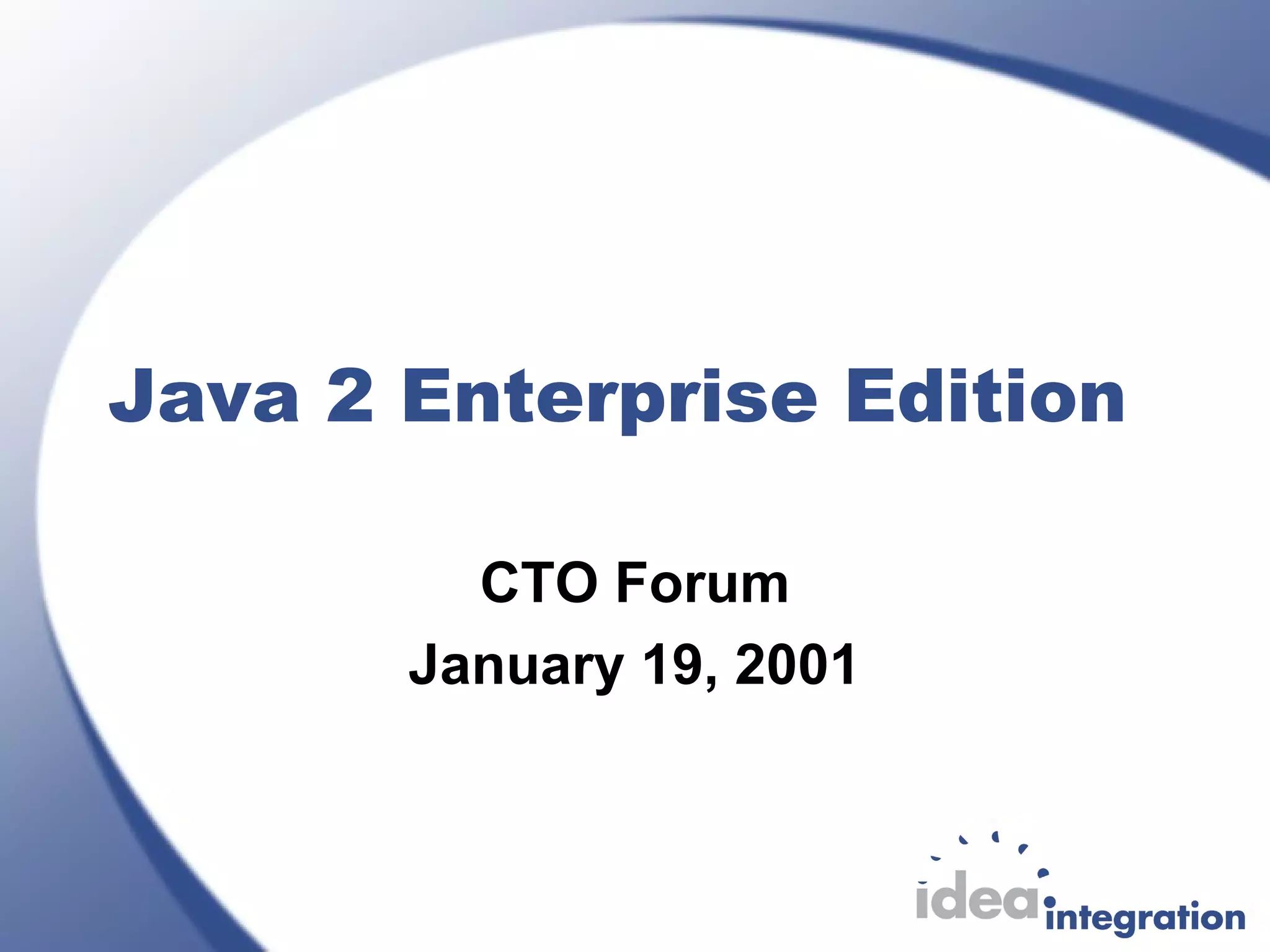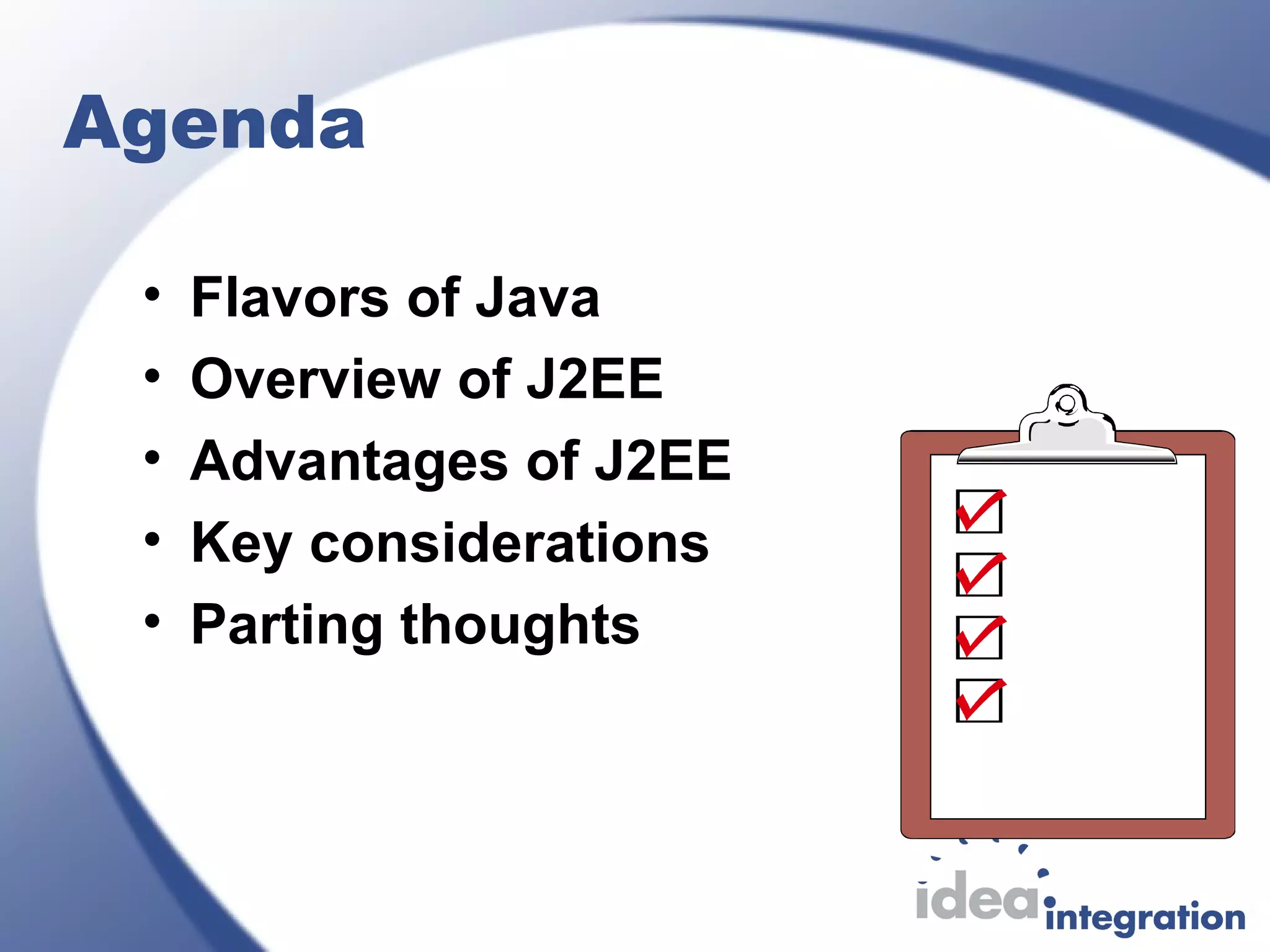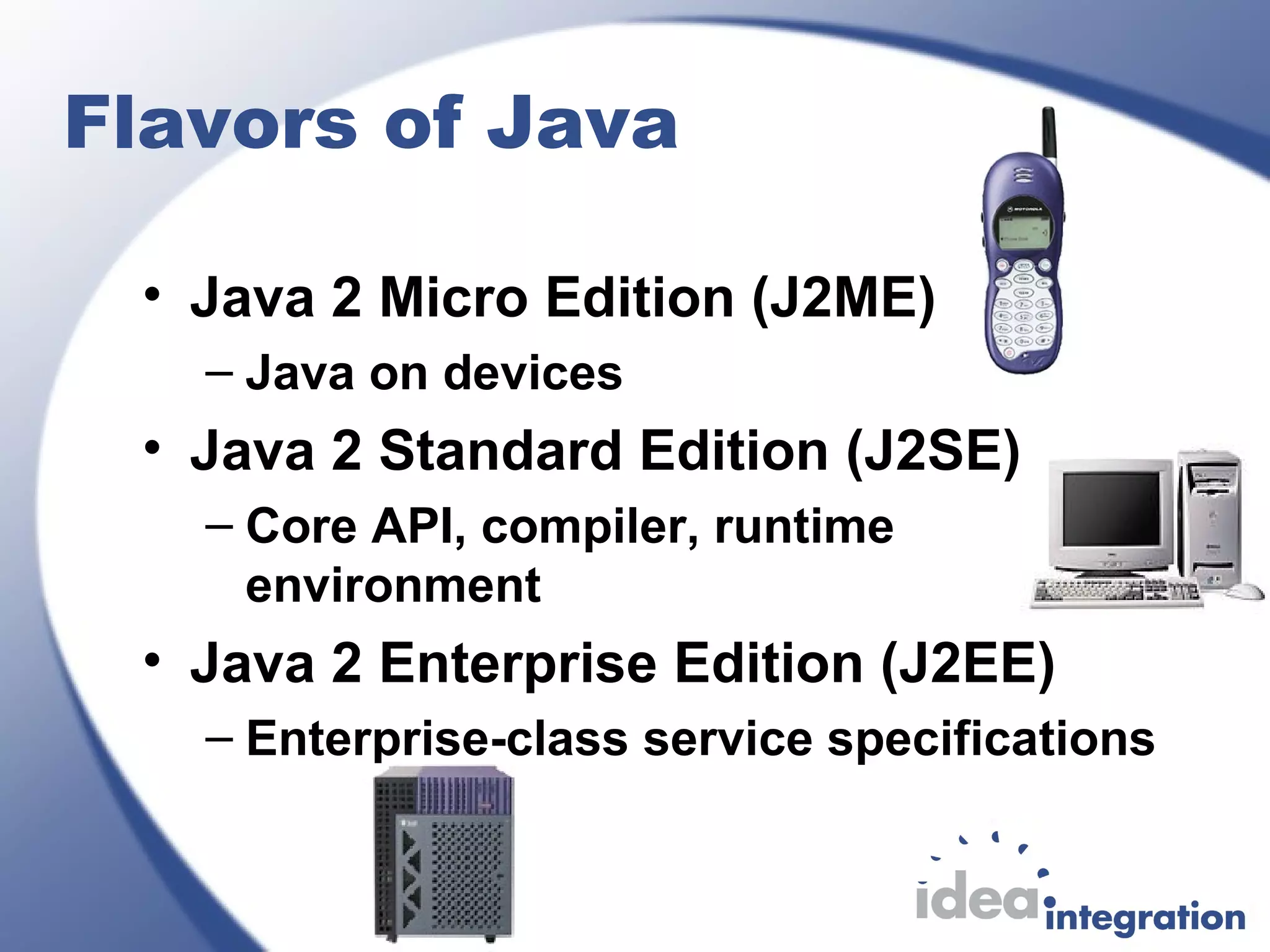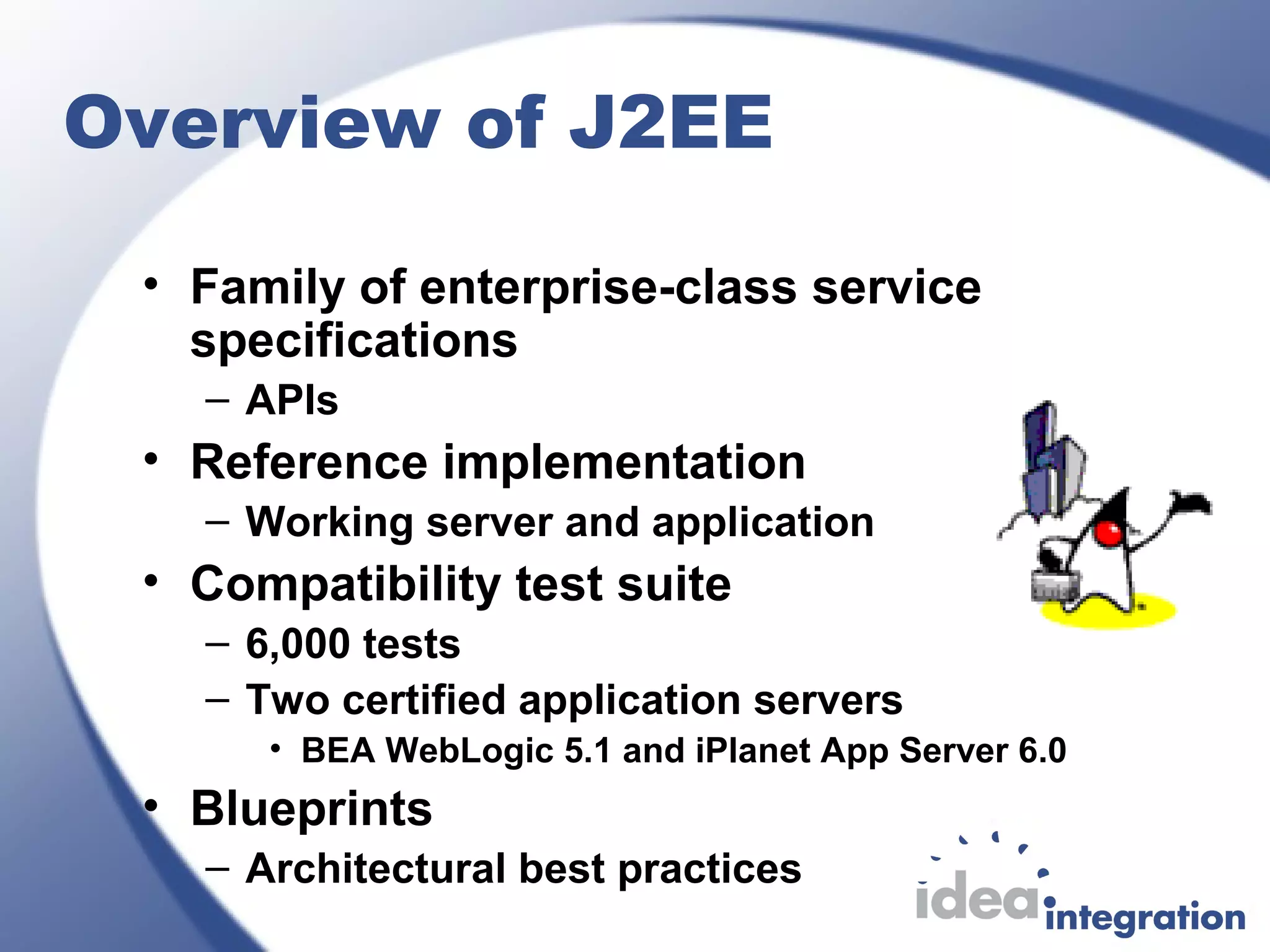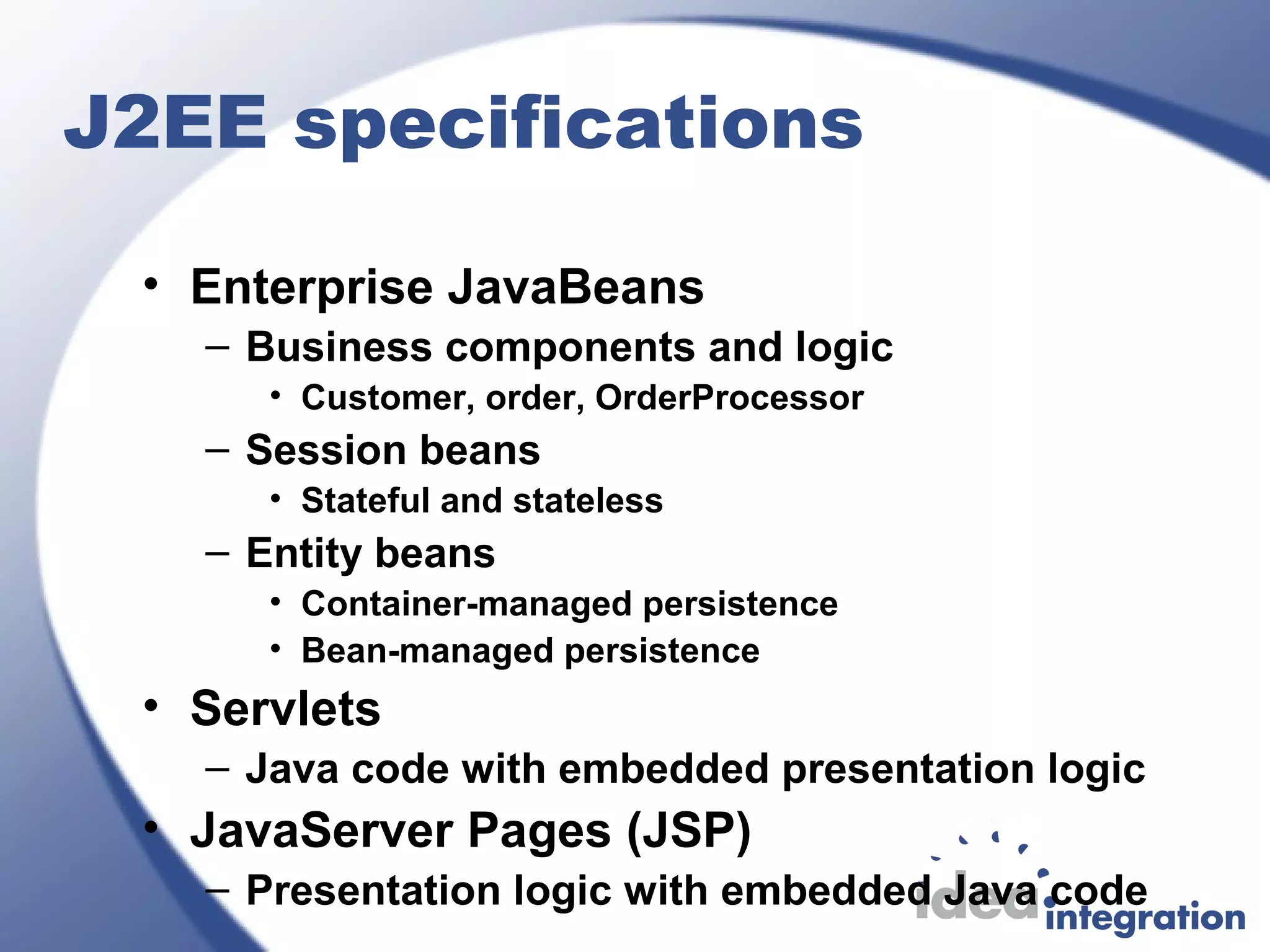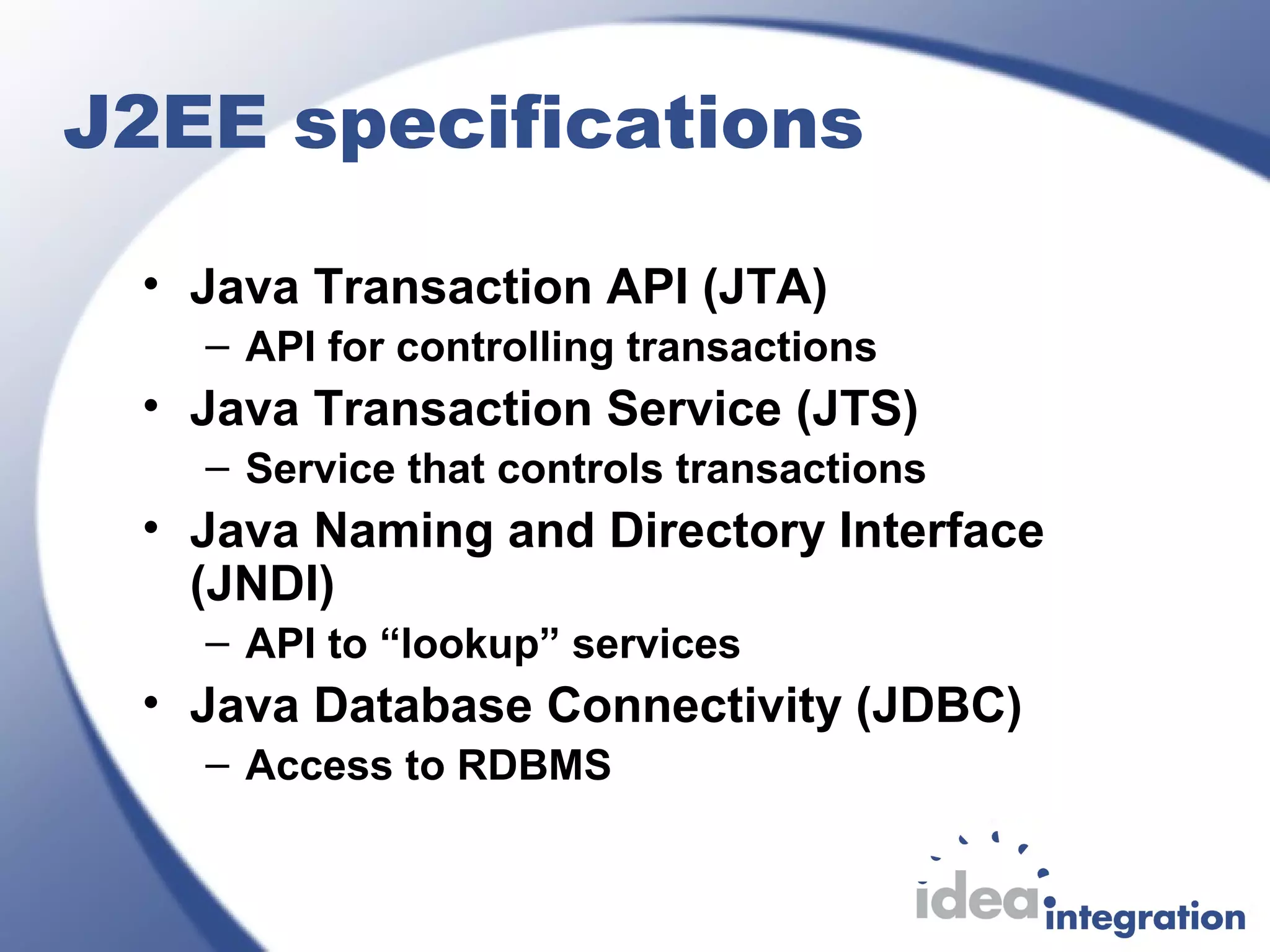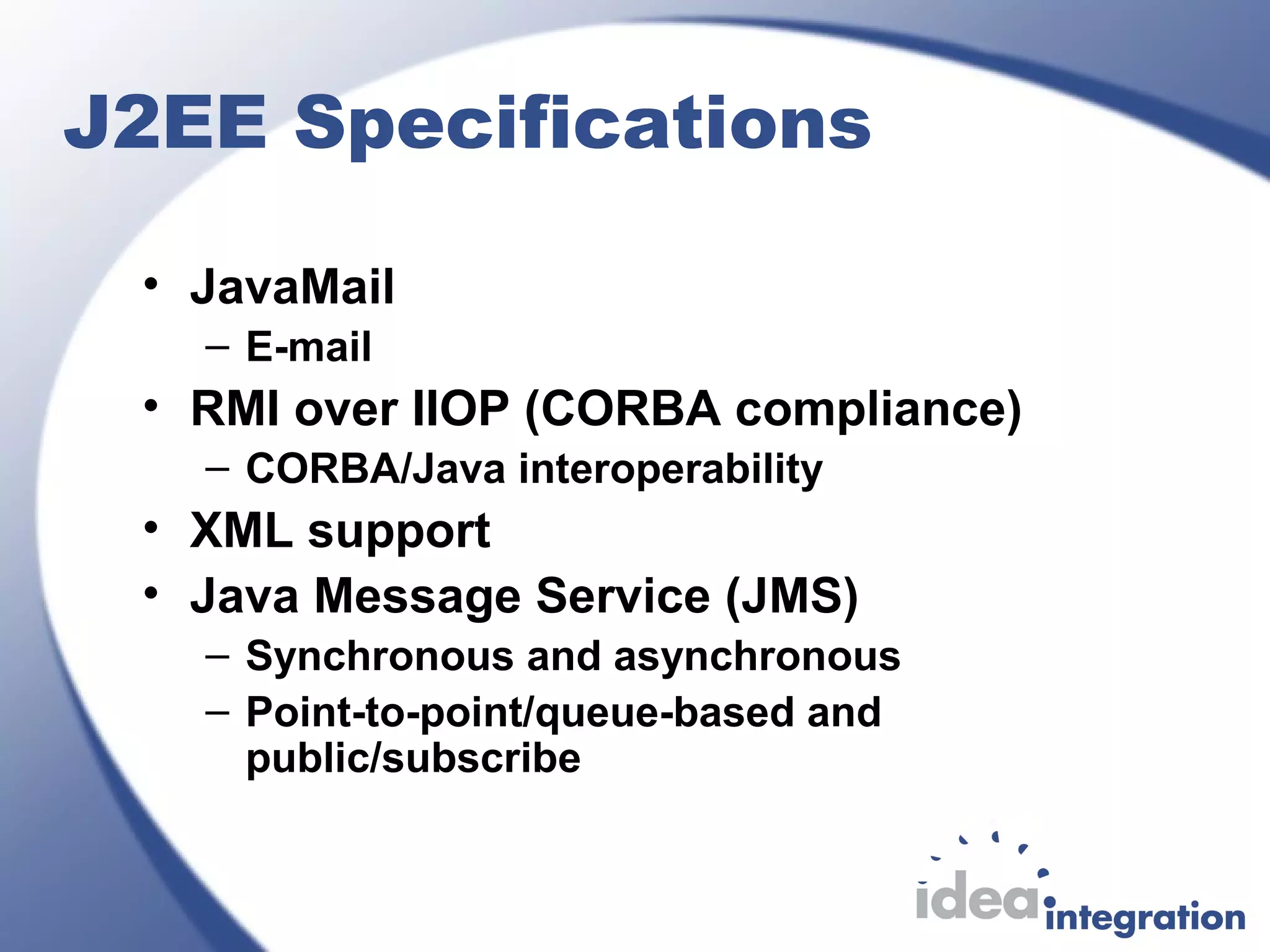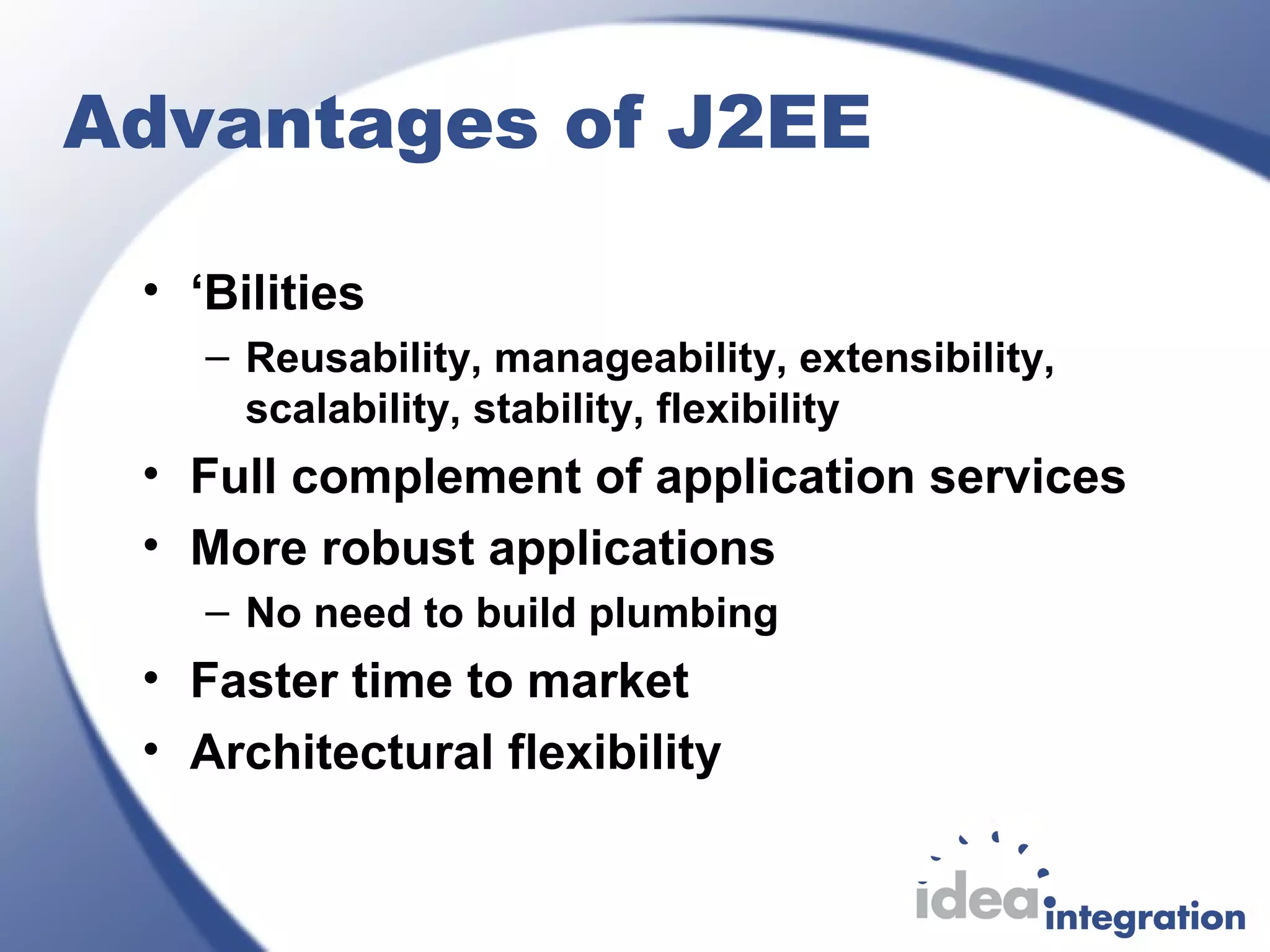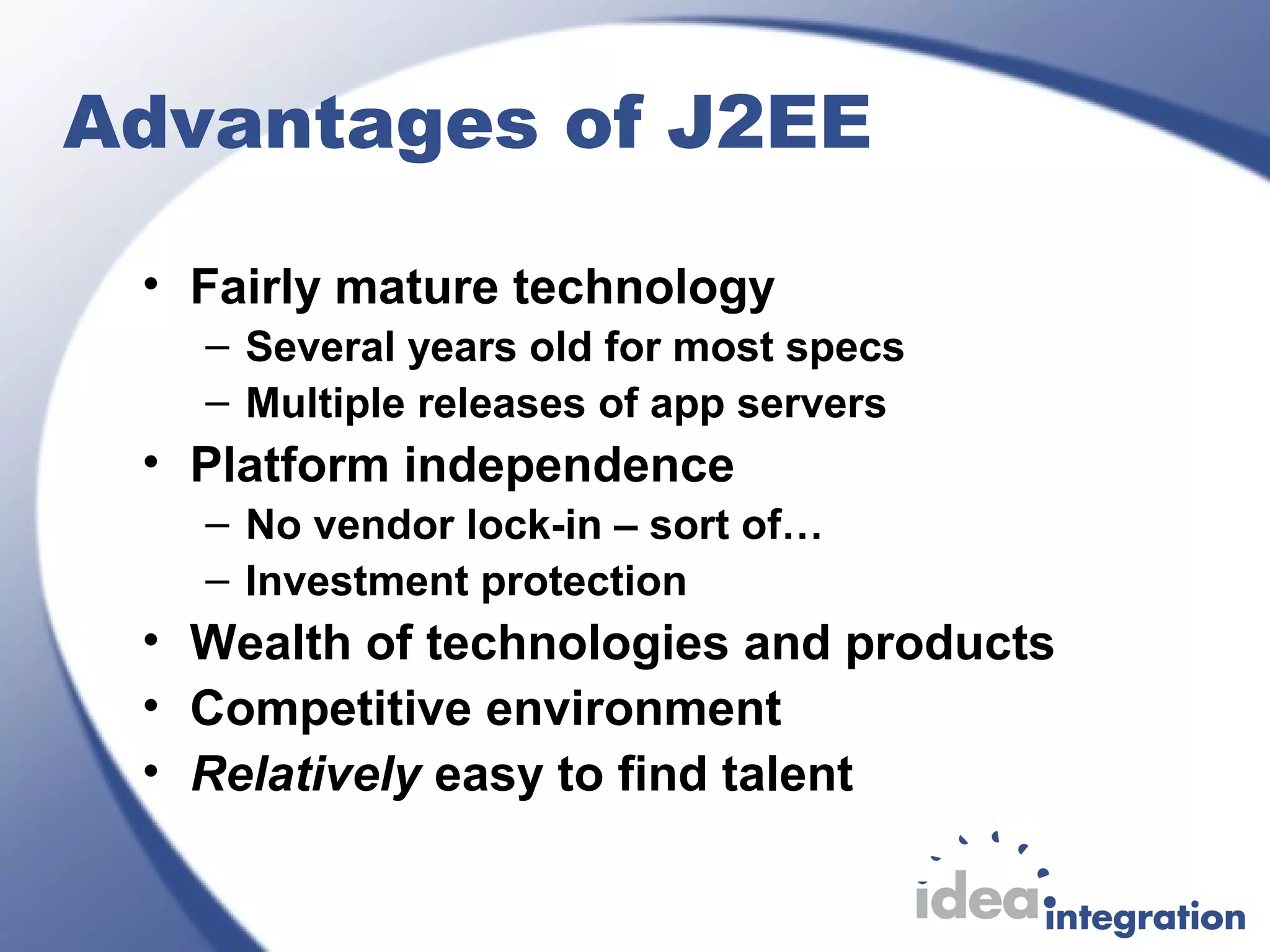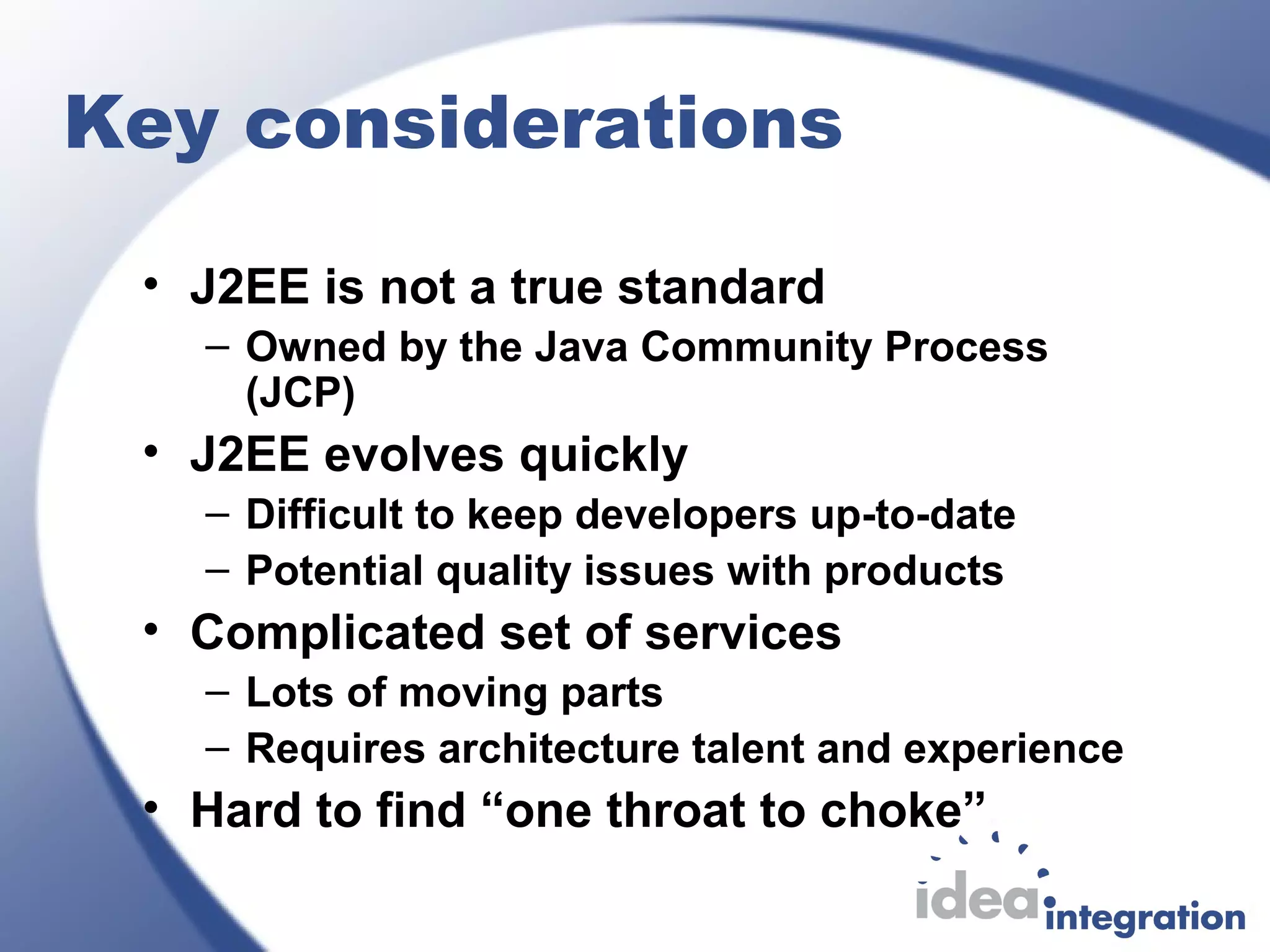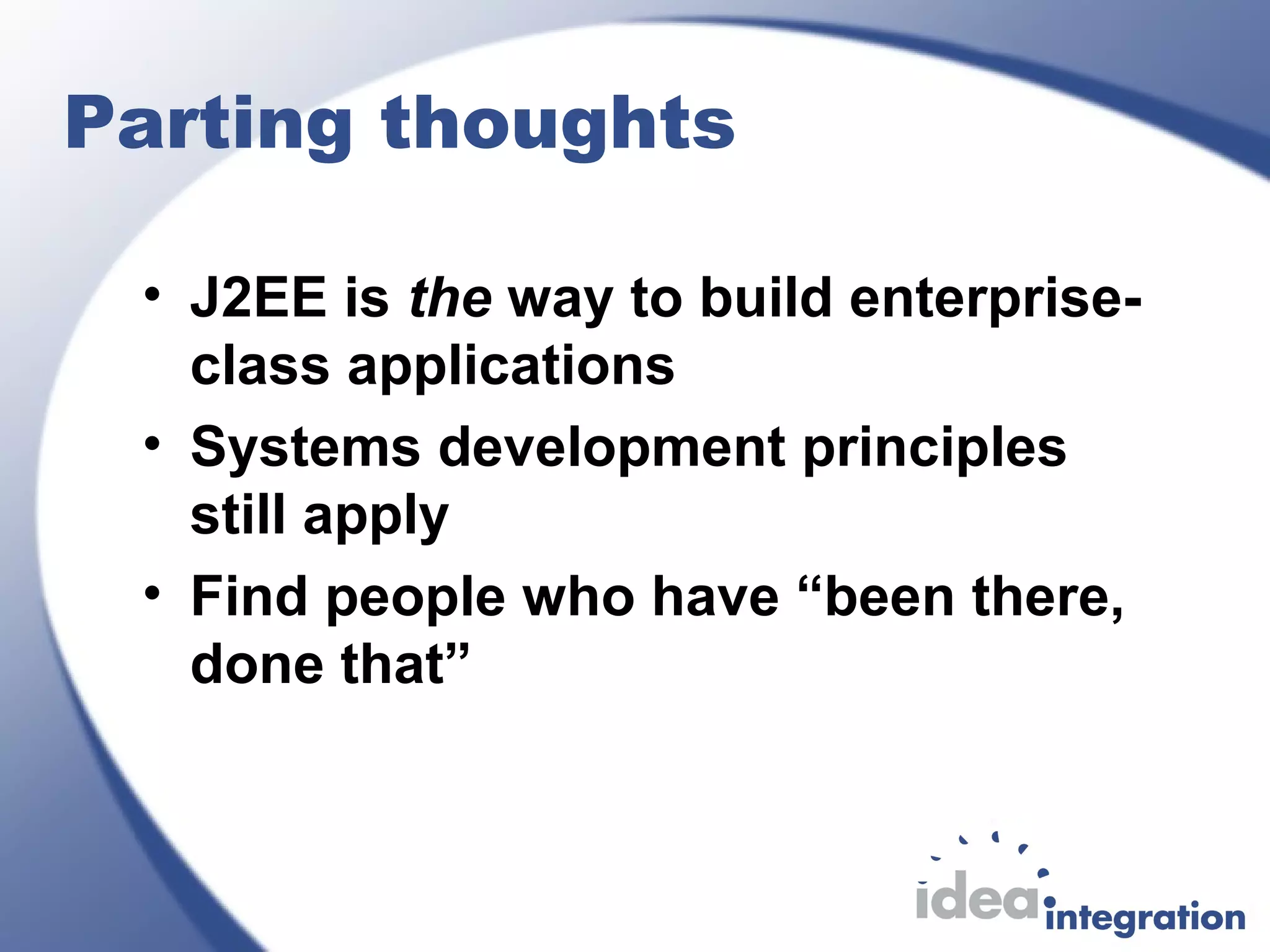The document discusses Java 2 Enterprise Edition (J2EE). It provides an overview of J2EE, including the key specifications like Enterprise JavaBeans, Servlets, JavaServer Pages, and others. It outlines the advantages of using J2EE such as reusability, scalability, and faster development time. The document notes some key considerations when using J2EE, such as that it is not a true standard and evolves quickly, requiring experienced architects to implement successfully.
